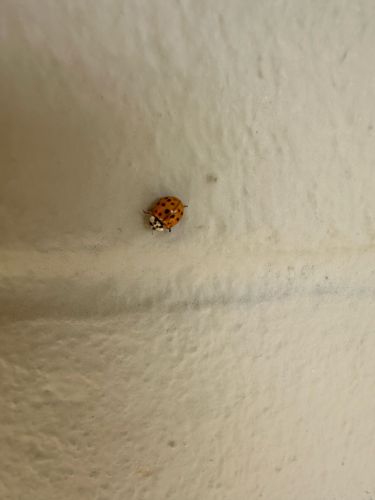Asian Lady Beetle
Scientific Name: Harmonia axyridis
Order & Family: Coleoptera, Coccinellidae
Size: 5 to 8 mm (0.2 to 0.3 inches)

Natural Habitat
Gardens, agricultural fields, forests, and often found indoors during colder months. They are highly adaptable and thrive in various environments where their prey (aphids) are abundant.
Diet & Feeding
Primarily predatory, feeding on soft-bodied insects like aphids, scale insects, and mealybugs. They are voracious eaters, especially as larvae, consuming hundreds of aphids daily.
Behavior Patterns
Known for their distinctive dome-shaped bodies and varied color patterns (ranging from yellow to orange to red with varying numbers of black spots). They typically overwinter in large aggregations, often invading homes and other sheltered structures. When disturbed, they can emit a foul-smelling, yellowish liquid as a defense mechanism (reflex bleeding).
Risks & Benefits
Benefits: Highly effective biological control agents against agricultural pests, significantly reducing the need for chemical pesticides. Risks: When they aggregate indoors, they can become a nuisance, staining surfaces with their defensive fluid and, in rare cases, causing allergic reactions in some individuals. They can also outcompete native ladybug species for food sources.
Identified on: 11/13/2025